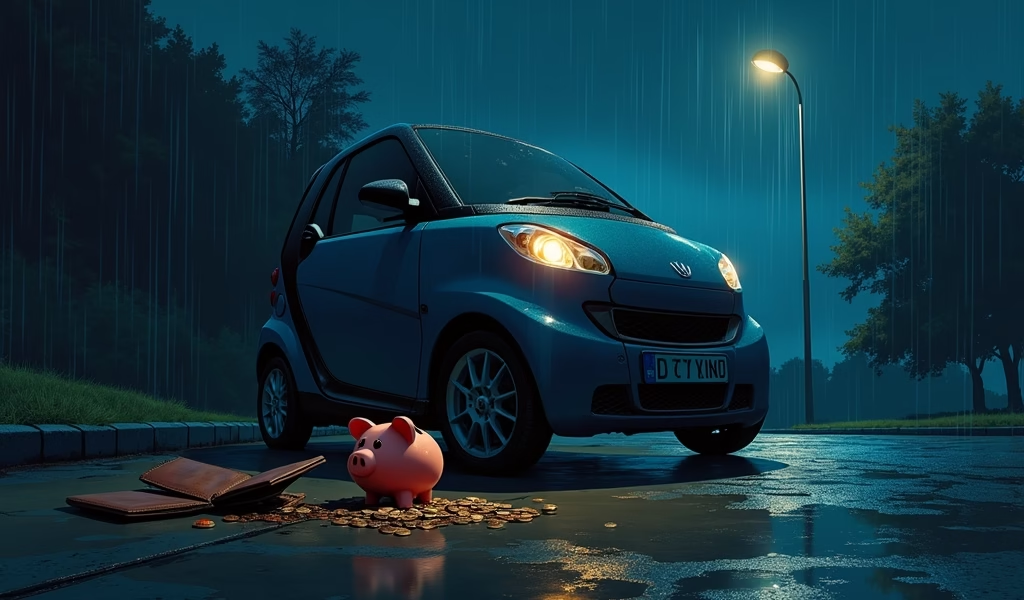Overview
This guide offers strategies for drivers under 25 to find affordable car insurance, including staying on parents’ policies, choosing insurance-friendly vehicles, utilizing good student discounts, and exploring usage-based insurance options. Young drivers pay more due to statistical risk, but can slash premiums through careful company selection, adequate coverage choices, and leveraging specific discounts that reward responsible behavior.
Table of Contents
- Why Young Drivers Pay More for Insurance
- Best Insurance Companies for Young Drivers in 2023
- Coverage Types: What Young Drivers Actually Need
- Discount Opportunities That Can Save You Hundreds
- Strategic Moves to Slash Your Premiums
- Common Mistakes Young Drivers Make When Buying Insurance
- The Road Ahead: Insurance Outlook for Young Drivers
- Conclusion: Finding Your Insurance Sweet Spot
- Frequently Asked Questions
Finding affordable car insurance when you’re under 25 often feels like trying to find a needle in a haystack. Trust me, as someone who’s spent years helping young drivers navigate the complex world of auto insurance, I understand the frustration. Insurance companies typically view young drivers as high-risk customers, and unfortunately, the statistics support this view. But don’t worry – there are still plenty of ways to find affordable coverage for new drivers without emptying your bank account.
At its core, car insurance for young drivers is all about managing risk factors while finding companies that specialize in providing reasonable rates to newcomers. Throughout this guide, I’ll share insider knowledge on how to secure the cheapest car insurance for new drivers under 25, including company recommendations, discount opportunities, and strategies that actually work in today’s market.
Why Young Drivers Pay More for Insurance
Let’s start with the uncomfortable truth: drivers aged 16-25 are nearly three times more likely to be involved in an accident compared to more experienced drivers. Insurance companies aren’t trying to punish young drivers – they’re simply playing the odds based on decades of statistical data.
When setting rates, insurers look at several factors that particularly affect young drivers:
- Limited driving history (you’re essentially an unknown risk)
- Higher statistical likelihood of accidents
- Less experience handling challenging road conditions
- Greater likelihood of distracted driving (especially from smartphones)
- Tendency toward riskier driving behaviors
According to the Insurance Institute for Highway Safety, the fatal crash rate per mile driven for 16-19-year-olds is nearly three times the rate for drivers 20 and over. Insurance companies have to factor these statistics into their pricing models.
For insurers, young drivers represent statistical mysteries with concerning trends. Without years of driving records to evaluate, they hedge their bets by charging higher rates. It’s like being guilty until proven innocent in the court of insurance actuaries.

Best Insurance Companies for Young Drivers in 2023
Not all insurance companies view young drivers through the same lens. Some insurers actually specialize in providing more affordable options for the under-25 crowd. Based on my experience working with hundreds of young drivers, here are five companies worth considering:
1. DriveWise Insurance
DriveWise specializes in policies for new drivers, with programs specifically designed to reward safe driving habits. Their standout mobile app tracks driving behavior and offers immediate feedback with potential monthly discounts. They also provide free roadside assistance for policyholders under 25.
Average costs typically run 15-20% lower than industry averages for young drivers, with premiums starting around $180/month for basic coverage.
2. SecureRide Auto Insurance
A well-established company known for competitive rates across all age groups but with particularly strong offerings for young drivers. They offer extensive discount programs including good student discounts (up to 25% off), away-at-school discounts, and a unique “parent mentor” program that provides additional savings when parents actively coach new drivers.
Expect to pay approximately $160-200/month for minimum coverage, with substantial discounts available.
3. TechDrive Insurance
This technology-focused insurance provider leverages telematics to offer usage-based insurance ideal for younger drivers. Their pay-per-mile options are great for college students or occasional drivers, along with an impressive accident forgiveness program that kicks in after just six months of clean driving.
Base rates start at approximately $190/month, but can drop significantly based on actual driving habits and mileage.
4. YoungGuard Protection
A smaller, regional insurer that’s gained popularity for its personalized approach to insuring young drivers. They offer 24/7 customer service with agents specialized in working with first-time insurance buyers. Their “GrowWithUs” program reduces rates automatically every six months of claim-free driving.
Starting premiums hover around $200/month, but with more aggressive rate reductions over time than most competitors.
5. FirstKey Insurance
Created specifically for new drivers, this insurance company offers simplified policies with transparent pricing. Their standout feature is a “rate lock guarantee” that protects young drivers from rate increases after their first minor incident. They also offer free monthly credit towards rideshare services for nights out – a smart safety feature.
While initial premiums run slightly higher (approximately $210/month), they offer significant loyalty discounts after the first year.
Coverage Types: What Young Drivers Actually Need
Understanding insurance terminology can feel overwhelming, but knowing what coverage you actually need is crucial to avoiding costly mistakes while still finding affordable insurance for young drivers.
Minimum Required Coverage
Every state has different requirements, but most mandate some form of liability coverage. This pays for damage you cause to others but doesn’t cover your own vehicle. While minimum coverage is cheapest upfront, it can be financially devastating if you cause a serious accident that exceeds your coverage limits.
Liability Coverage: The Foundation
Think of liability coverage as your financial shield when you make a mistake. It comes in two parts:
- Bodily injury liability: Covers medical expenses for others if you’re at fault
- Property damage liability: Pays for damage to others’ vehicles and property
For young drivers, I recommend liability limits higher than state minimums whenever possible. The few extra dollars per month could save you from bankruptcy later.
Comprehensive and Collision Coverage
These optional coverages protect your own vehicle:
- Collision: Pays for damage to your car from an accident regardless of fault
- Comprehensive: Covers non-accident damage like theft, vandalism, or weather damage
If you have a newer car or a loan, these coverages are usually worth the cost. However, for very old vehicles worth less than $3,000, you might consider skipping them and putting that money into savings instead.
Uninsured/Underinsured Motorist Coverage
This often-overlooked coverage protects you when the at-fault driver either has no insurance or inadequate coverage. Given that roughly one in eight drivers on the road is uninsured according to the Insurance Information Institute, this coverage is particularly valuable for young drivers who may not have the financial reserves to cover medical bills after an accident.
Discount Opportunities That Can Save You Hundreds
Insurance companies offer numerous discounts that can significantly reduce premiums for young drivers. Don’t leave money on the table—ask specifically about these opportunities:
Good Student Discounts
Maintaining a B average (typically 3.0 GPA or higher) can earn you discounts of 10-25%. Insurance companies have found that responsible students tend to be responsible drivers, and they’re willing to reward academic achievement with lower rates.
Defensive Driving Courses
Completing an approved defensive driving course demonstrates your commitment to safety and can reduce premiums by up to 15%. These courses typically cost $50-100 but can pay for themselves quickly through insurance savings. Many are available online and take just 4-6 hours to complete.
Low-Mileage Discounts
The less you drive, the lower your risk of accidents. Many insurers offer substantial discounts for drivers who put fewer than 7,500-10,000 miles on their car annually. If you’re a college student who only drives when home on breaks, make sure your insurer knows this.
Multi-Policy Discounts
Bundling renters or homeowners insurance with your auto policy typically saves 5-15%. Even young drivers in apartments can benefit from this discount, which is one of the easiest ways to lower your premium.
Vehicle Safety Feature Discounts
Cars with advanced safety features like anti-lock brakes, electronic stability control, and multiple airbags often qualify for discounts. When shopping for a car, consider these features not just for safety but for insurance savings.

Strategic Moves to Slash Your Premiums
Beyond discounts, several strategies can dramatically reduce what young drivers pay for insurance. These approaches take a bit more planning but can lead to substantial savings.
Staying on Parents’ Policy vs. Getting Your Own
For most young drivers under 25, remaining on a parent’s policy as a listed driver is significantly cheaper than getting individual coverage. This approach can save 40% or more compared to a standalone policy. The family policy benefits from the parents’ established driving record, multi-car discounts, and longer customer history.
Even if you live separately, you may still qualify to stay on a family policy if you’re a full-time student or return home regularly. This is one of the most effective ways to access affordable insurance for new drivers.
Choosing Insurance-Friendly Vehicles
That sporty coupe might turn heads, but it will also turn your premium into a budget-buster. Insurance-friendly cars for young drivers typically include:
- Four-door sedans and small SUVs
- Vehicles with high safety ratings
- Models with low theft rates and repair costs
- Cars with modest horsepower
The difference between insuring a Honda Civic versus a Mustang GT can be hundreds of dollars monthly for a young driver. If you’re shopping for a car, check insurance rates before making a purchase decision.
Usage-Based Insurance: Let Your Driving Speak for Itself
Telematics programs monitor your actual driving behavior through a smartphone app or device plugged into your car. For cautious young drivers, these programs can lead to substantial savings—sometimes up to 30%. They track factors like:
- Acceleration and braking patterns
- Cornering speed
- Time of day driving
- Speed relative to posted limits
- Phone usage while driving
If you’re confident in your driving abilities, these programs offer a way to prove yourself to insurance companies rather than being judged solely by your age group.
Higher Deductibles: A Calculated Risk
Choosing a higher deductible (the amount you pay out-of-pocket before insurance kicks in) can lower your premium significantly. Increasing your deductible from $500 to $1,000 might save 10-15% on your premium.
However, this strategy only works if you have the deductible amount readily available in savings. Don’t choose a deductible you couldn’t comfortably pay in an emergency.
Building Credit: An Unexpected Insurance Hack
Many young drivers don’t realize that in most states, insurance companies use credit information as a rating factor. Even building modest credit through responsible use of a low-limit credit card or being an authorized user on a parent’s account can positively impact your insurance rates over time.
Start building credit early – it’s not just for car loans and mortgages but can significantly influence your insurance costs as well.
Common Mistakes Young Drivers Make When Buying Insurance
After helping hundreds of young drivers find affordable coverage, I’ve noticed several common pitfalls that can cost you significantly:
Choosing Insufficient Coverage
The cheapest policy isn’t always the best value. Minimum liability limits can leave you financially exposed in a serious accident. Remember: insurance is meant to protect your future earnings and assets, not just satisfy legal requirements.
A single serious accident could result in damages far exceeding minimum coverage limits, potentially putting your savings and future wages at risk.
Not Shopping Around
Insurance pricing varies dramatically between companies, especially for young drivers. Getting quotes from at least five insurers can reveal surprising price differences for identical coverage.
Don’t assume that the company your parents use is automatically the best choice for you – each company has different rating factors and target customer profiles.
Ignoring Policy Details
Those dense policy documents matter. Understanding exclusions, coverage limits, and policy terms can prevent nasty surprises when you need to file a claim.
Take the time to read the declarations page at minimum, which summarizes your coverages and limits. Ask questions about anything you don’t understand.
Failing to Update Information
Life changes like moving, changing jobs, or improved grades can affect your premium. Regularly updating your information ensures you’re getting all available discounts and accurate pricing.
Set a calendar reminder to review your insurance every six months – companies rarely automatically apply new discounts you might qualify for.
The Road Ahead: Insurance Outlook for Young Drivers
The good news? Insurance premiums typically begin to decrease meaningfully around age 25, assuming you maintain a clean driving record. Each year of safe driving builds your case as a responsible driver deserving of better rates.
In the meantime, I recommend reviewing your insurance every six months until age 25 to capture new discounts and decreases as they become available. Insurance companies rarely apply rate improvements automatically—you need to ask.
Looking ahead, several trends may benefit young drivers in the coming years:
- More sophisticated telematics programs that better differentiate good young drivers from risky ones
- Increased competition among insurers for the young driver market
- More flexible, usage-based options ideal for occasional drivers
- Additional discount opportunities tied to safe driving apps and programs
The key is being proactive rather than passive. Insurance companies reward those who demonstrate responsibility and actively manage their insurance profile.
Conclusion: Finding Your Insurance Sweet Spot
Finding affordable insurance under 25 requires understanding the system, shopping smartly, and leveraging every available discount. While you can’t change your age, you can demonstrate that you’re the exception to the statistical rules about young drivers.
Remember: the best approach combines adequate protection with reasonable cost. The cheapest insurance that leaves you vulnerable to financial disaster isn’t really a bargain at all.
Focus on building a clean driving record, maintaining good grades if you’re a student, choosing vehicles wisely, and revisiting your insurance regularly. These habits will not only save you money now but set you up for preferred rates as you get older.
The journey to affordable car insurance as a young driver may not be straightforward, but with the strategies outlined in this guide, you’ll be well-equipped to navigate the road ahead without breaking the bank.
Frequently Asked Questions
What’s the single best way for a driver under 25 to lower their insurance costs?
Staying on a parent’s policy while maintaining a clean driving record is typically the most effective strategy. This approach can save 30-50% compared to individual policies for young drivers.
Do I need full coverage insurance if I have an older car?
If your car is worth less than $3,000, comprehensive and collision coverage may cost more over time than the car’s value. Consider liability-only coverage and put the savings toward a future vehicle upgrade.
How much does my GPA actually affect my insurance rates?
A good student discount for maintaining a B average (3.0 GPA) typically saves between 10-25% on premiums. This can translate to hundreds of dollars annually, making it one of the most valuable discounts available to young drivers.
Will getting a speeding ticket dramatically increase my insurance as a young driver?
Yes, even a single speeding ticket can increase premiums by 20-30% for drivers under 25. Insurance companies are particularly sensitive to moving violations for young drivers due to the already elevated risk profile.
Is it worth paying for telematics/usage-based insurance as a young driver?
For cautious young drivers who don’t drive late at night, telematics programs can lead to savings of 10-30% after the initial monitoring period. The programs reward behaviors that statistically correlate with lower accident risk, giving good young drivers a way to prove themselves.


Pingback: How much is car insurance for teens Tips - knowsyourcar.com